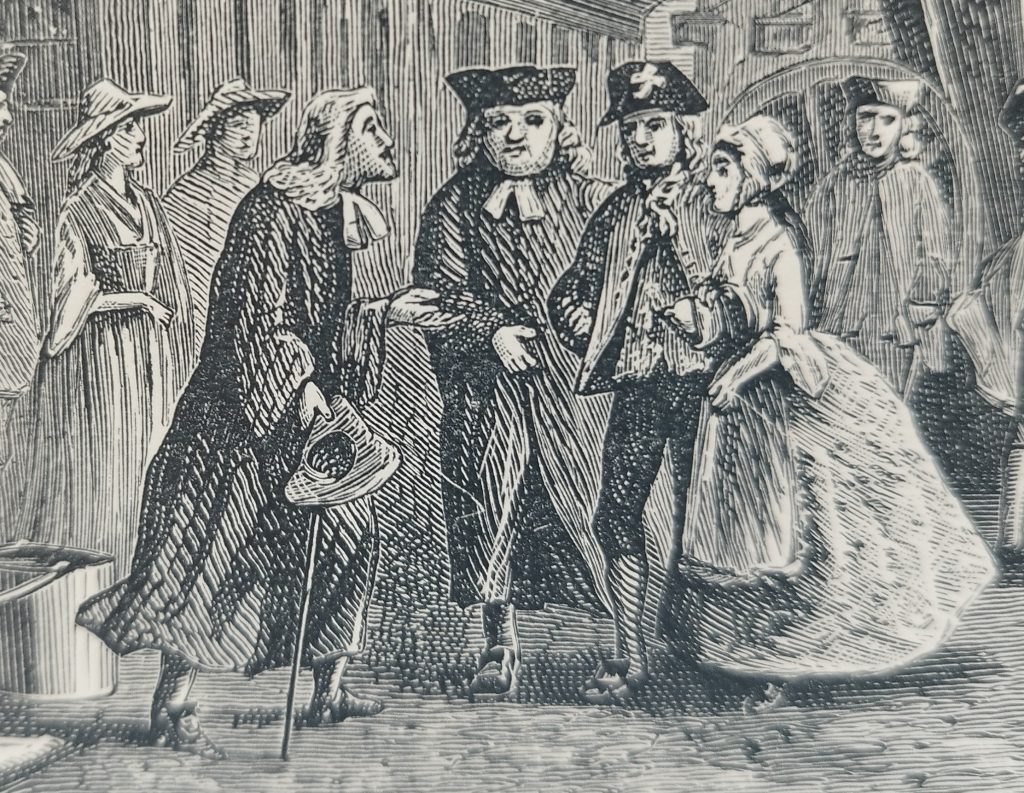Rectors and Vicars explained
30 June 2023
So, what exactly is a rector?
A rector in the Church of England was (and continues to be in parishes such as Loughborough) essentially a parish priest, with the same duties as those carried out by a vicar, a role we’re perhaps more familiar with today.
Historically, those duties have included –
- leading morning and evening prayers;
- delivering sermons in the regular round of church services and
- additional sermons on saints days and holy days;
- officiating at christenings, marriages and funerals;
- attending meetings to deal with parish matters, and
- supporting the needs of parishioners in the community, including the poor.
The difference between the post of rector and vicar comes down to status, with a rector considered of higher social standing than a vicar and the income – or stipend – he received reflecting that difference.
Parishioners covered the cost of their parish priest through payment of a tax – known as a tithe – on the crops they grew, the animals they raised and the goods that they made.
The word ‘tithe’ – from the Old English word teopa – means ‘one tenth’, and this was the percentage each parishioner must hand over to their local representative of the Church of England from everything they produced. Tithes were a legally enforceable tax and all parishioners had to pay them, whether they followed the protestant faith or not.
The wealthier those parishioners were, then, the greater the amount of goods their parish priest received, and the wealthier he himself became as a result. The broad, flood-enriched meadows of Loughborough parish easily sustained flocks of sheep whose wool was turned into cloth and sold as far afield as Calais. Because of this, local landowners became very rich and in turn, so did the local Rector. As mentioned elsewhere, the ‘living’ of Loughborough was indeed a very handsome one.
Initially, tithes were collected largely as goods, a one-tenth portion of the annual harvest and stored by the priest in tithe barns built for the purpose.[1]
It’s been said the idea behind paying the clergy like this was to link the fortune of a cleric with those of his parishioners, so that all did well when the harvest was a good one and suffered equally when it was bad. Whether this was originally the intended purpose or not, cases of clergymen struggling to get people to hand over their tithes are well documented (including for Revd Bickham).
To complicate matters, there were two levels of tithes –
- greater tithes, which included everything that arose from the ground – wheat, oats and barley, for example, as well as hay and wood, with even windfall apples being taxable[2], and
- lesser tithes, which were all things nourished by the ground – the produce of livestock such as eggs, milk and butter – and the livestock itself – chickens, lambs, pork and the like.
As you might guess, the higher-statused rector was entitled to receive tithes from both categories – the greater and the lesser, whilst a vicar only received the lesser tithes – about a quarter of all the tithes collected in the parish.
This didn’t mean that a parish with a vicar got off lightly, however. The full ten percent tithe was still collected in, but with the remaining three-quarters being paid to whoever owned the advowson for the parish (which as stated previously, might be the lord of the manor, a wealthy private individual or an institution such as a university). Another very good reason for buying up an advowson if you were able to.
So, as a result of the difference in the tithes they were entitled to receive, clergymen with the title of rector tended to be wealthier (and by association, more powerful) than those who were merely vicars.
Interestingly, these differences are reflected in the titles themselves. The word rector is related to the words right and rectify, signifying that the role of the rector was to lead his parish in the right direction.
The word vicar comes from ‘vicarious’ – from the Latin noun vicis, meaning ‘stead’. The oldest meaning of vicarious, dating to the first half of the 1600s, is ‘serving instead of someone or something else’.
Rectors had an additional advantage over vicars in that parishes headed by a rector usually had farm land – known as glebe land – designated for the cleric’s use and thereby providing additional income from crops and livestock, or from rent.[3] In return, the rector was responsible for paying for any repairs that were carried out to the chancel[4] in the church, an obligation not expected of a vicar.
Well-paid rectors and vicars had enough disposable income to employ a lower-ranked clergyman to carry out much of the day-to-day work of the parish on their behalf. These were known as a curate, a word meaning to be responsible for the ‘care or cure of souls.’ Technically, then, any clergyman could be classed as a curate, though in reality the expectations on the roles were very different.

Alison Mott
[1] This was changed to a monetary payment of their value in the Tithe Act of 1836.
[2] From ‘Tithes and the Rural Clergyman in Jane Austen’s England’ by Eileen Sutherland, on the website of the Journal of the Jane Austen Society of North America, sutherland.pdf (jasna.org) [accessed 23.6.23].
[3] From the Latin gleba or glaeba, meaning clod, land, soil
[4] The area behind the altar.